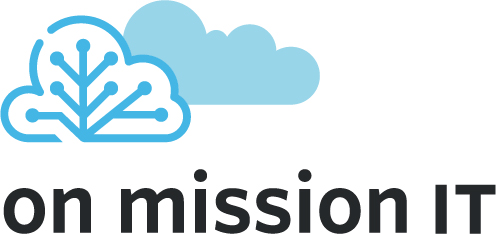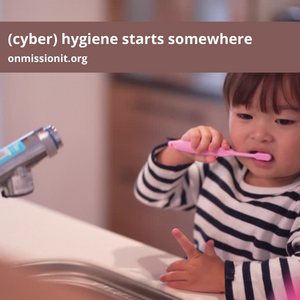Welcome to 2022 where managing your cybersecurity is as important for your nonprofit as brushing your teeth is for your overall health. At OnMission IT, we are committed to the cyber-health of your organization. We understand that you have a lot on your plate every day and that’s why we started a program to help with a free security risk assessments for Frederick-based 501c3 organizations. If you’d like to learn more, click here and we can make it as easy as brushing your teeth.
In the meantime, take a look at this piece as one of your new year’s resolutions!
This article was originally published by Clark Computer Services via The Clark Report.
With so many Cyberattacks prevalent today, we rarely discuss them as a whole – instead, we talk about the number of ransomware, malware, or phishing attacks. Part of the reason for this is that the number of cyberattacks has grown so large that they don’t seem real.
Look at these statistics:
- cybercriminals build 300,000 pieces of malware daily
- the cost of breaches in 2021 is near $6 trillion worldwide
- hackers breached 21 million records Jan to Mar of 2021
- the month of October 2021 alone saw 51.2 million records breached
- As of this past Oct, there were 185,721,284 total records breached in 2021
And if you’d like a live view of cyberattacks, take a look at the FireEye Cyber Threat Map.
But the question remains – Why are there so many Cyberattacks?
 MONEY IS THE BIGGEST MOTIVATOR
MONEY IS THE BIGGEST MOTIVATOR
That’s right, based on 2020 stats, six out of every ten attacks extort money from companies and individuals – and that number will likely go up in 2021. The way the news reports cyberattacks, it might seem that big business is the most often targeted sector.
But that would be an incorrect assumption.
Healthcare – our medical records – suffer the most security incidents, followed closely by the Public – us. Together, these two sectors make up 47% of all security incidents. The reason for this is actually quite simple – most people don’t believe they are important enough to be targeted by cybercriminals.
This is yet another incorrect assumption because…
OUR DATA HAS VALUE
Do a Google search for a random product and then start paying attention to the ads that come up on the internet, and you will start seeing ads for those products.
Most of the information used to accomplish this is de-identified, meaning that while you see the advertisements, you are not specifically being targeted. Automated programs use the keywords you searched to target behaviors. In this way, anyone who searches for those keywords sees those ads.
 Unfortunately, the rise of this type of targeted advertising has put an unprecedentedly significant focus on consumer data. Today, every business in the world collects data on their customers to help them to better market their goods and services.
Unfortunately, the rise of this type of targeted advertising has put an unprecedentedly significant focus on consumer data. Today, every business in the world collects data on their customers to help them to better market their goods and services.
The problem is that businesses don’t de-identify the data they collect. They want to know where you live, how old you are, your gender, email address, phone number, what devices you use, etc. They can develop specific targeting algorithms for you and people like you by collecting this information. Cybercriminals realize this too, which is why they began attacking businesses and stealing this information.
OUR DATA IS MORE VALUABLE TO CYBERCRIMINALS
Cybersecurity experts track the number of breached records because that number directly relates to cyberattacks. This stolen personal data is collected and sold on the dark web for future attacks. In this way, cybercriminals are constantly feeding one another – they essentially have a black market for personal data, where everyone involved profits.
 The Public sector – you and I – are under constant attack because there were 185,721,284 total records breached so far in 2021. The cybercriminals have our data, and they use it to create phishing campaigns, spread malware, steal business credentials, plunder financial accounts, and so much more.
The Public sector – you and I – are under constant attack because there were 185,721,284 total records breached so far in 2021. The cybercriminals have our data, and they use it to create phishing campaigns, spread malware, steal business credentials, plunder financial accounts, and so much more.
And this relates directly to the attacks on the Healthcare sector as it stores more personal information than any other entity. So by attacking this sector, they acquire the personal data sold to the cybercriminals who create the scams.
All this means is that in 2022, attacks on the Public sector – all of us – will increase in number and complexity.
HOW DO I FIGHT BACK
Practice good cyber hygiene. Use Strong Passwords, enable 2-Factor Authentication, do Security Updates immediately, get a good AntiVirus, and Be Aware of the Cyber Threats out there. Cyberattacks aren’t going anywhere, so it’s up to all of us to protect ourselves.

